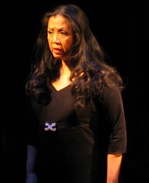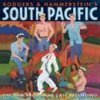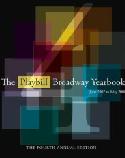SITE GUIDE
SEARCH
REVIEWS
REVIEW ARCHIVES
ADVERTISING AT CURTAINUP
FEATURES
NEWS
Etcetera and
Short Term Listings
LISTINGS
Broadway
Off-Broadway
NYC Restaurants
BOOKS and CDs
OTHER PLACES
Berkshires
London
California
New Jersey
Philadelphia
Elsewhere
QUOTES
TKTS
PLAYWRIGHTS' ALBUMS
LETTERS TO EDITOR
FILM
LINKS
MISCELLANEOUS
Free Updates
Masthead
A CurtainUp Review
OUT CRY
|
The properties of the play are the properties of our lives.
.—-Felice
|

Mia Katigbak
(Photo: Czerton Lim) |
Out Cry, sometimes alternatively called The Two Character Play, follows a brother-sister team of actors towards the end of a long and wearying tour. Felice (Eduardo Machado) and Clare (Mia Katigbak, the company's artistic director) have been abandoned by their fellow actors, who have left only a note accusing them of being insane. Despite an incomplete set (well-designed by Czerton Lim, though really underutilized in the staging) and almost wholly absent company, Felice convinces his sister to go on with the show. In this case the show is the aforementioned Two Character Play, about a reclusive brother and sister who refuse to leave their home. The parallels are obvious, and as the play proceeds it becomes clear that the fear and panic of the characters reflects the same anxieties in the actors—and are increasingly difficult to contain within the illusory frame of the theater.
It's an interesting premise, but in practice the work that Williams called his most "beautiful play since [A Streetcar Named Desire]" has a hard time deciding how avant-garde it wants to be, or how committed to it. A huge sculpture periodically makes odd mechanical sounds at the beginning, frightening both actors, but this stops after a few minutes and is essentially forgotten for the rest of the play. Phones are randomly connected and disconnected, but this too is never explored in any detail, nor applied to the play's larger context in any meaningful way. Yet the incredibly eccentric behavior of Felice and Clare continually pushes the action out of any realistic frame.
Williams evidently wasn't fully comfortable with this mix, and making it work is a daunting task. On paper the experience to pull it off seems to be there: Machado has been a theater fixture for many years, and his knowledge of every aspect of dramatic production ought to be good preparation for this work. But again, in practice Machado doesn't invest his character with any memorable presence. Felice is intended to seem somewhat in control of Clare, but he delivers his lines flatly and with little energy. It's hard for the audience to care about his circumstances when he clearly doesn't. Katigbak is much more successful representing Clare's paranoia and schizophrenic tendencies, but she can't do it alone as too often she's forced to do so that.
Though, taken as a whole, the acting isn't up to the play's challenge, this too is an uncertain verdict, because director Thom Sesma content to let the text wander on without real distinctiveness or message. This is particularly frustrating given the play's flashes of wit and thoughtful dialogue ("Don't worry about the ending, it'll come to us, Clare. I think you'll find it wherever you hid it.") This is Tennessee Williams, after all. But it's also Williams playing at being Pirandello, and navigating that masquerade is tricky business. I give NAATCO full credit for making the attempt, but effort only goes so far, and in the end this one doesn't really pay off.
For more about Tennessee Williams and links to other Williams plays reviewed at Curtainup, see our Tennessee Williams Backgrounder.
|
OUT CRY Playwright: Tennessee Williams Directed by Thom Sesma Cast: Mia Katigbak (Clare), Eduardo Machado (Felice) Set Design: Czerton Lim Costume Design: Candida K. Nichols Lighting Design: Stephen Petrilli Sound Design: Jane Shaw Running time: One hour, fifty-five minutes (includes one ten minute intermission) Abingdon Theater, 312 W. 36th St., (212) 868-4444 Website: http://www.abingdontheatre.org/ From 11/29/08 to 12/21/08; opening 12/04/08 Tues. - Sat. @ 7 p.m., Sun. matinee @ 3 p.m. Tickets: $20 Reviewed by Gregory A. Wilson based on December 3rd performance |
|
REVIEW FEEDBACK Highlight one of the responses below and click "copy" or"CTRL+C"
Paste the highlighted text into the subject line (CTRL+ V): Feel free to add detailed comments in the body of the email. |






